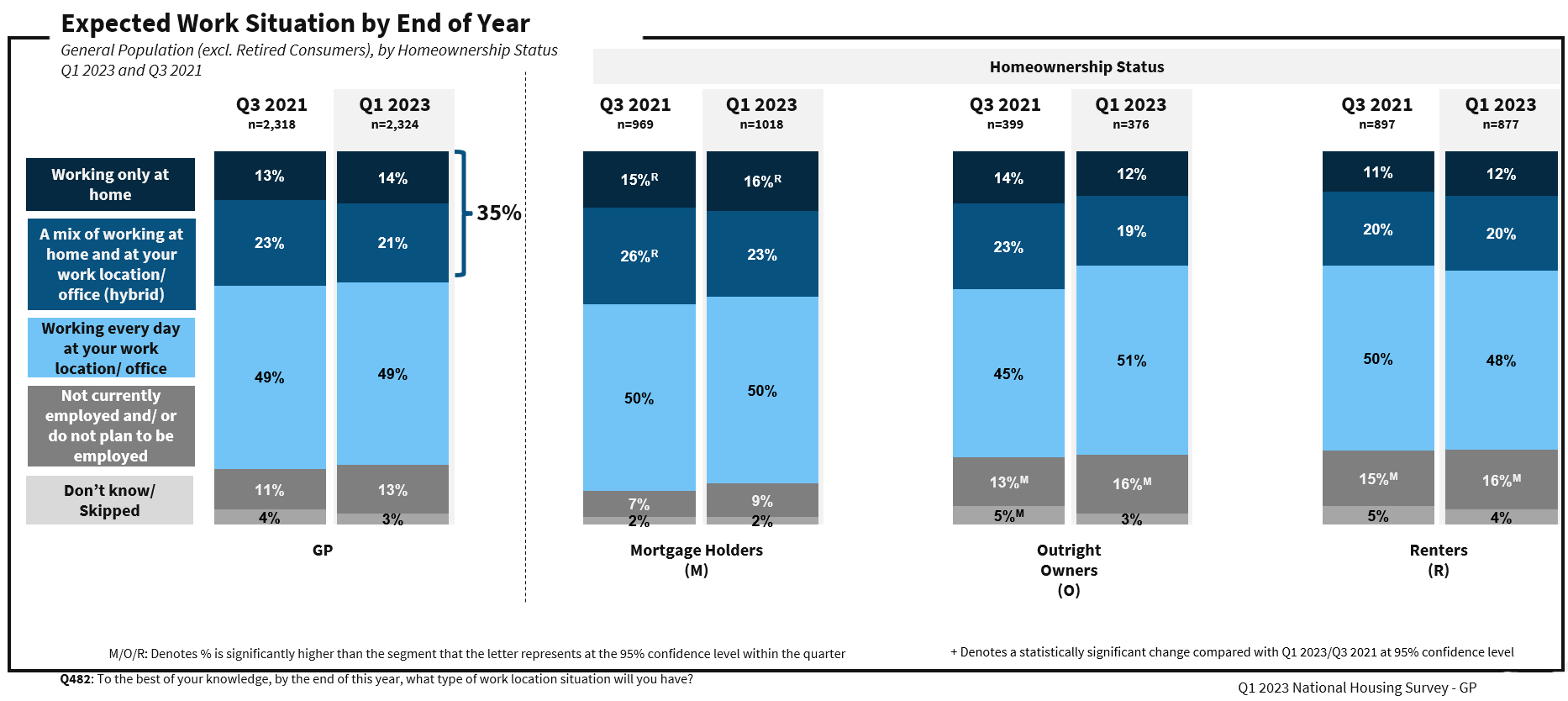 According to a new Fannie Mae Perspectives Blog post, authored by Mark Palim, Fannie Mae’s VP and Deputy Chief Economist, and Rachel Zimmerman, Fannie Mae’s Market Research Advisor and National Housing Survey Lead, the rise in home prices that occurred during the pandemic buying frenzy—along with the move to remote work—still matter today, as the opportunities for expanded remote work opportunities could help with the current affordability of homes.
According to a new Fannie Mae Perspectives Blog post, authored by Mark Palim, Fannie Mae’s VP and Deputy Chief Economist, and Rachel Zimmerman, Fannie Mae’s Market Research Advisor and National Housing Survey Lead, the rise in home prices that occurred during the pandemic buying frenzy—along with the move to remote work—still matter today, as the opportunities for expanded remote work opportunities could help with the current affordability of homes.
According to an updated survey National Housing Survey (NHS) conducted by Fannie Mae, which now asks respondents questions about working and living preferences to track changing attitudes, overall found that the willingness to move farther away from the workplace has increased (22% in the first quarter of 2023, up from 14% during the third quarter of 2021) due to the fact that remote work seems to be here to stay as they also revealed that the percentage of fully remote and hybrid workers has remained surprisingly constant in the post-pandemic era (35% in the first quarter of 2023, down from 36% in the third quarter of 2021).
The affordability crisis currently affecting a large swatch of Americans is affecting renters the most and their concerns about affordability have risen so much that it has become the top consideration for their next move (46% during the first quarter of 2023, up from 21% during the fourth quarter of 2014).
In addition, for owners, affordability is a greater concern, too, (30% during the first quarter of 2023, up from 19% in the fourth quarter of 2014) and is their second-most important consideration for their next move after neighborhood considerations. The suburbs have consolidated its lead as the preferred location to buy a home for both renters (38% during the first quarter of 2023, up from 35% in the third quarter of 2010) and owners (44% in the first quarter of 2023, up from 37% in the third quarter of 2010).

According to the NHS, the mix between in-office, hybrid, and fully remote workers has only marginally changed since 2021, as 14% report they work fully remotely and 21% work a hybrid schedule, compared to 13% and 23%, respectively, in 2021.
“The consistency of the percentage of people working remotely indicates to us that, despite headline-grabbing news of companies demanding that workers return to the office, so far, remote and hybrid work may be here to stay,” Fannie Mae said. “This is likely due in part to the benefit for employees of having access to a wider range of housing markets (enabling commuting and other cost savings, along with greater variety of amenities to select from). It also grants employers access to a larger pool of job candidates.”
This notion of remote work would expand the locations where workers could choose housing, not due to their proximity to work, but based on what they can afford and where they would like to live.
In 2023, 22% of remote and hybrid workers indicated they may be willing to relocate to a different region or increase their commute by more than 20 minutes, whereas only 14% of remote and hybrid workers were willing to do so in 2021. Generally, 29% of workers are more apt to move farther away from work—this number includes a seven-percentage point increase by homeowners, even though they have traditionally been less apt to move than renters are.
“We believe this greater willingness to live farther from the actual or nominal workplace may be an indication that some workers are feeling more secure about their remote work situation and/or their ability to find another job if their current employer were to change its policies,” Fannie Mae concluded. “The decoupling of local labor markets from housing markets has the potential to both reduce labor market rigidities nationally and housing market vulnerability more locally. Overall, we consider this is a positive development for workers, employers, and the ability of households to pay their rent or mortgage.”
To view Fannie Mae’s blog post in its entirety, with additional graphs and charts, click here.

 theMReport.com Your trusted source for mortgage banking news
theMReport.com Your trusted source for mortgage banking news








